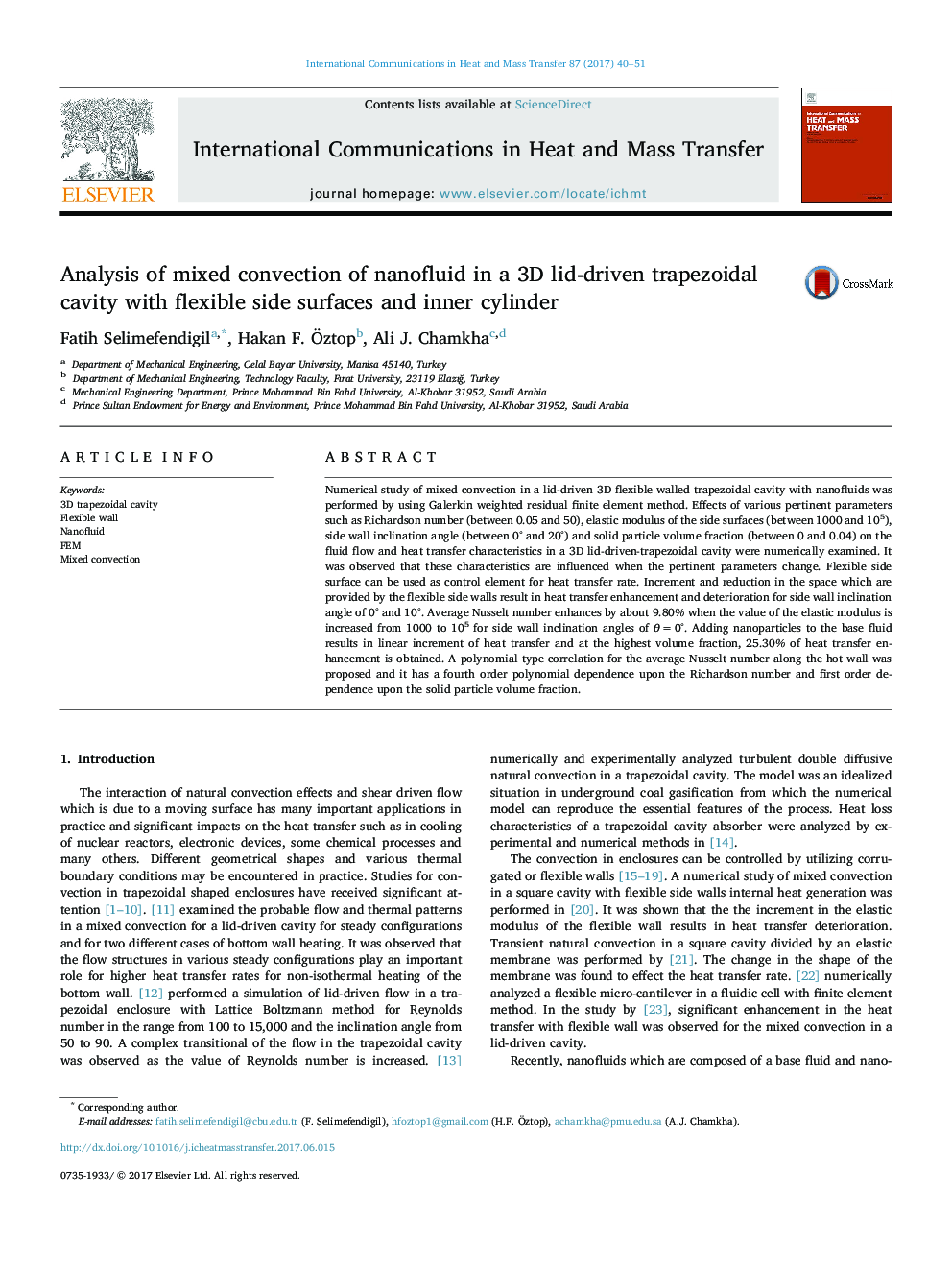| Article ID | Journal | Published Year | Pages | File Type |
|---|---|---|---|---|
| 4992808 | International Communications in Heat and Mass Transfer | 2017 | 12 Pages |
Abstract
Numerical study of mixed convection in a lid-driven 3D flexible walled trapezoidal cavity with nanofluids was performed by using Galerkin weighted residual finite element method. Effects of various pertinent parameters such as Richardson number (between 0.05 and 50), elastic modulus of the side surfaces (between 1000 and 105), side wall inclination angle (between 0° and 20°) and solid particle volume fraction (between 0 and 0.04) on the fluid flow and heat transfer characteristics in a 3D lid-driven-trapezoidal cavity were numerically examined. It was observed that these characteristics are influenced when the pertinent parameters change. Flexible side surface can be used as control element for heat transfer rate. Increment and reduction in the space which are provided by the flexible side walls result in heat transfer enhancement and deterioration for side wall inclination angle of 0° and 10°. Average Nusselt number enhances by about 9.80% when the value of the elastic modulus is increased from 1000 to 105 for side wall inclination angles of θ = 0°. Adding nanoparticles to the base fluid results in linear increment of heat transfer and at the highest volume fraction, 25.30% of heat transfer enhancement is obtained. A polynomial type correlation for the average Nusselt number along the hot wall was proposed and it has a fourth order polynomial dependence upon the Richardson number and first order dependence upon the solid particle volume fraction.
Related Topics
Physical Sciences and Engineering
Chemical Engineering
Fluid Flow and Transfer Processes
Authors
Fatih Selimefendigil, Hakan F. Ãztop, Ali J. Chamkha,
